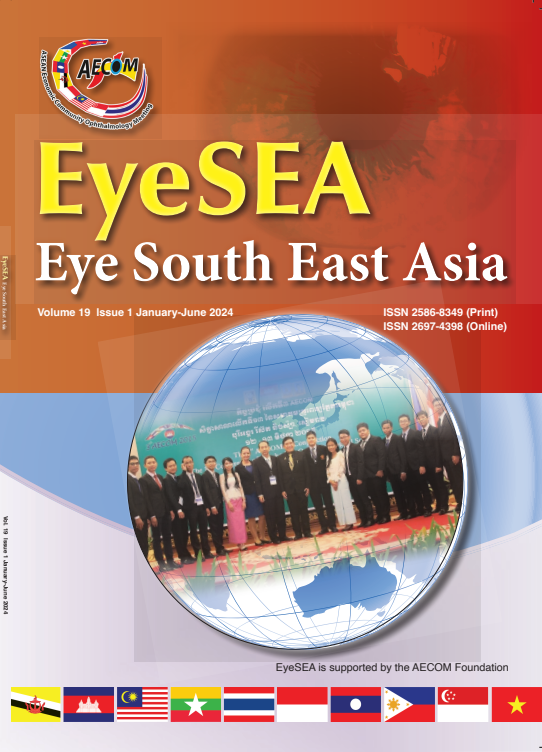Photo Integrated Experience Challenge (PIEC): An Innovative Active Learning Method for Teaching Ophthalmology Residents
Main Article Content
Abstract
Background: Active learning has emerged as a cornerstone in medical education, promoting superior knowledge retention and social-cognitive skills compared to traditional methods. For ophthalmology residents, developing proficiency in interpreting ophthalmic images is paramount, as over 80-90% of ocular diagnoses rely on ophthalmic images from digital slit lamp and other ophthalmic devices. In light of this, we introduce the Photo Integrated Experience Challenge (PIEC), an innovative active learning method that leverages the combined strengths of ophthalmic image diagnosis, personal knowledge and experience sharing. This research aims to evaluate the advantages and effectiveness of PIEC, along with gathering student feedback on its implementation.
Methods: PIEC class is implemented every week throughout an academic year. Each session includes 5-6 residents from first year to third year and lasts for 50 minutes. Initially, first year residents initiate the discussion by sharing their existing knowledge and observations related to pre-assigned eye disease images which are shared on the monitor. Subsequently, second and third year residents expand upon the initial insights, offering additional perspectives and integrating their personal clinical experiences about the disease. Throughout the process, the instructor helps facilitate the discussion, share expert knowledge and experience about the disease from clinical practice, and synthesize key learning points at the session’s conclusion. To objectively assess knowledge acquisition, 29 participating residents completed pre- and post-course self-evaluations on each covered topic. Additionally, we employed a feedback questionnaire to evaluate student experiences and perceptions of PIEC.
Results: This research found a statistically significant increase in residents’ self-reported knowledge acquisition, as evidenced by a jump in mean scores from 52.70% to 82.60% between the pre- and post-course evaluations (p < 0.05). This improvement was particularly pronounced in the areas of disease investigation (40.96% gain) and treatment (37.02% gain). Qualitative feedback revealed that the PIEC method fostered deeper understanding, engagement, and critical thinking. Residents reported the method being fun, easy to prepare for, and less stressful than traditional lecture-based instruction. Additionally, they felt increased confidence in communication and knowledge integration.
Conclusion: PIEC effectively enhances ophthalmology residents’ critical thinking, communication skills as well as knowledge integration with clinical experience, suggesting its potential as a valuable active learning tool in medical education.
Conflicts of Interest: Authors have no conflict of interest.
Article Details

This work is licensed under a Creative Commons Attribution-NonCommercial-NoDerivatives 4.0 International License.
References
Torralba KD, Doo L. Active learning strategies to improve progression from knowledge to action. Rheumatic Disease Clinics of North America. 2020;46(1):1–19.
Koh GC, Khoo HE, Wong ML, Koh D. The effects of problem-based learning during medical school on physician competency: a systematic review. CMAJ. 2008;178(1):34-41.
Pérez-Sabater CA, Montero-Fleta BE, Pérez-Sabater MA, Rising BE, De Valencia UP. Active learning to improve long-term knowledge retention. InProceedings of the xii simposio internacional de comunicación social 2011 (pp. 75-79).
Ben Graffam. Active learning in medical education: Strategies for beginning implementation. Medical Teacher.2007;29(1):38-42.
Ken Masters (2013) Edgar Dale’s Pyramid of Learning in medical education: A literature review. Medical Teacher. 2013;35(11): e1584-e1593.
Ryan MC, Ostmo S, Jonas K, et al. Development and Evaluation of Reference Standards for Image-based Telemedicine Diagnosis and Clinical Research Studies in Ophthalmology. AMIA Annu Symp Proc. 2014;2014:1902-1910.


